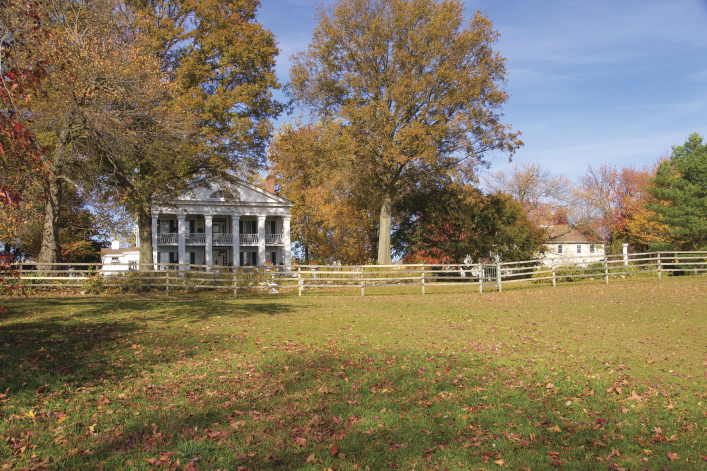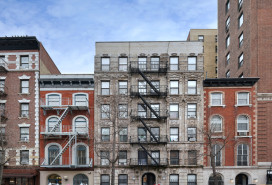Discover the antebellum-style Staten Island mansion you've probably never heard of — and the one New Yorker who actually lives in it

For architecture buffs looking for a Greek Revival antebellum-style house in New York City, here’s a clue: Take the Staten Island Ferry. Once you’re on the island make your way to the Seguine House, an 1838 mansion facing Prince’s Bay originally built as part of a working plantation.
Though it had fallen into disrepair, the 16-room home, now restored and refurbished, is the star of a new book “The Seguine House: A Nineteenth Century Working Estate in Twenty-First Century New York City.”

Here, author and interior designer Christina Mantz explains why the house is so unique, how Frederick Law Olmstead had a role in the grounds, and why the savior of the property — now run by the city —still lives there.
Who were the Seguine family?
They were French Huguenots originally. Joseph Seguine, who built the house, was involved in oystering, candle-making, schooners and he helped found the Staten Island railroad.
You grew up on Staten Island. Why did this house interest you?
I lived in an 1840 farmhouse not far from it, and the Seguine always had such a mystique about it. There had been other beautiful houses, but as Jane Austen would say, it was well situated, and that made it grand.
After it had fallen on hard times, the house was bought in 1981 by local interior designer George Burke, who admired it as a boy.
Yes, and everyone thought he was crazy, because the house needed so much work. There was a huge hole in the roof, and dead rats and possums in the basement. It had been looted. George rescued it, and now there is new development around him, new townhouses, so I’m thrilled the property is preserved.
Is the restoration a replica of life in the house in the mid nineteenth century?
It is not a recreation. George (who spent five years working on the two and a half story home) has restored it as far as integrity of the house, so the walls and woodwork have been carefully replaced and the outside columns have all be restored. It has a fan window in front, which is a feature of the period.
.
Above the black marble mantel in the Parlor Room hangs mid-19th century painting The Death of Cleopatra. The Meissen candelabras are in the Rococo style.
So what has changed?
George was stationed in Europe with the army after World War II, and at that time a lot of grand houses were selling antiques, and he came back with container loads. So he has an eclectic mix in the house from his collection of paintings and furniture.
Does he continue to work on the interiors and gardens?
He does! He’s constantly adding and improving. People who own Seguine artifacts do call him too. He has the family Bible, some documents, and a painting of Joseph Seguine.
Frederick Law Olmstead, who co-designed Central Park, worked on the original garden plans.
Olmstead for a time lived on Staten Island and was a friend and neighbor. He helped with the layout of the gardens and designed the orchard, which George replanted last year. Olmstead loved the property because it went all the way to the water.
The house is on the National Register of Historic Places and the Historic House Trust. What makes it unique?
It’s the only one of its kind with a working farm, working stables and gardens. It was one of the great houses not just on Staten Island but New York City. They built on the highest point on the property, so when Sandy hit, the water did come up as far as the driveway, but it didn’t disturb the house.
George Burke donated the house in 1989 to the city, which operates it as a historic house museum. (Tours by appointment). Yet he still lives there.
It’s a very rare arrangement. He has life rights to stay there and he still takes care of the property and the grounds, and throws beautiful parties there. People are shocked he lives with all that grandeur. But to step into that house you really do feel you are going back in time. You realize how important it is to preserve homes, otherwise that history will lost forever.

The Trophy Room includes an 18th Century portrait of Frederick the Great. The landscape paintings are 19th-Century American.
Related:
New York City photographer captures city buildings in decay
How one writer lived large in a 340-square-foot Greenwich Village walk-up
Best books to give the NYC real estate lover






















